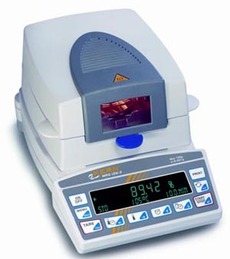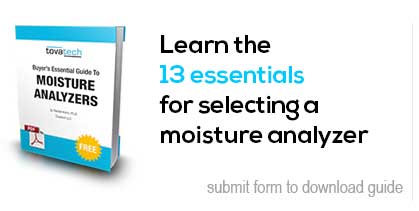How to Use Moisture Analyzers for Grain & Flour Quality Control

Moisture content, defined as the percentage of a product’s weight due to water, is an essential measure of quality control. A gravimetric moisture analyzer is employed across a broad spectrum of industries to confirm that moisture content is in line with regulations governing a particular industry.
Agricultural products such as grains and the flour derived from grains provide an illustration of where a moisture analyzer is put into play. A University of Minnesota Extension Report, for example, states that wheat and barley grain must have a moisture content of 13% to 14% for safe storage. Achieving that target can be costly and time consuming in wet weather.
When wheat is milled to flour another target applies. A study at the Institute of Food Science and Technology, University of Agriculture, Faisalabad, Pakistan, reports that moisture content of flour is very important regarding its shelf life. Lowering the flour moisture increases its storage stability. The study concluded that flour with moisture content between 9% and 10% is suitable for extended shelf life.
Desk- or table-top moisture analyzers such as the IL Series available from Tovatech are ideal for small-sample validation of the moisture content of grain and flour. These work as miniature halogen-heated “ovens” placed on a microprocessor-controlled analytical balance. The product being measured, in this case grain or flour, is loaded on a sample taking care to spread the sample evenly across the surface of the plate. The target moisture content or drying time is programmed into the precision scale according to accompanying instructions and the unit is turned on.
The halogen lamps distribute fast even heat across the sample, driving off moisture until the weight of the sample becomes constant (i.e. no more moisture is driven off) or a pre-set drying time is reached, or if the loss in weight per unit of time falls below the target value. The moisture analyzer then computes and displays the sample’s moisture content. To conform to GLP for record keeping the moisture analyzer can be connected to a PC and statistics printer via an RS 232 interface.
Grains and flours are but two of the many food categories where correct moisture content is essential. When moisture content is too high, food processing efficiency can be impaired, spoilage may occur and customers pay for unneeded weight in terms of excess moisture. Processing efficiency is also affected when food products are too dry. A moisture analyzer is a smart investment to regularly check on the moisture content of food products, following the company’s operations manual.
FREE GUIDE | |
 | |
